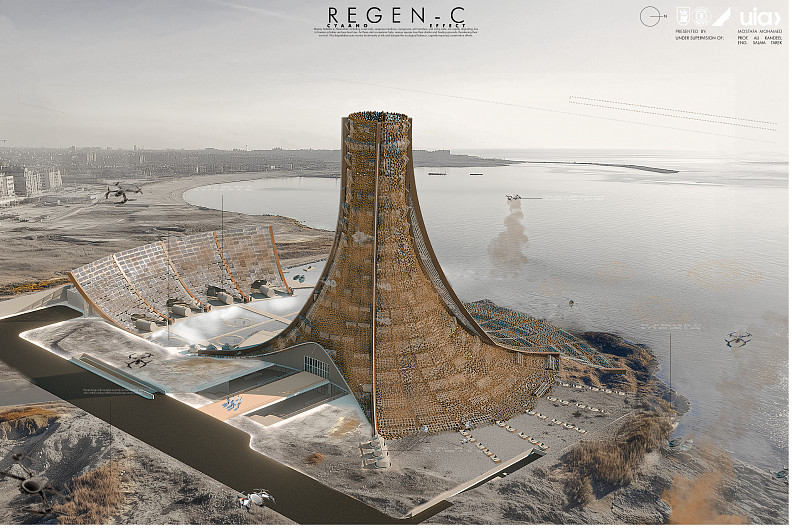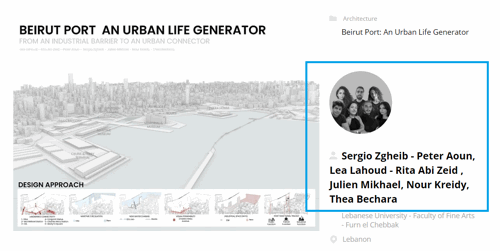REGEN-C

Project idea
"Regenerating Marine Ecosystems through Biotechnological Architecture"
The project is a Marine Biodiversity Research Center designed to address the rapidly degrading marine habitats of Alexandria, particularly coral reefs, seagrass meadows, and mangroves, which are threatened by human activities and rising sea levels. The design introduces an innovative system that uses bacterial biofilms harvested from the building’s perforated mesh facade. These biofilms produce organic nutrients that are used to generate artificial marine habitats.
The building features a circular profile, with a central cylindrical tower where bacterial biofilm is stored, and pipes that distribute nutrients to different parts of the structure. The tower and the surrounding space utilize advanced robotics and drones to collect bacteria, monitor growth, and deploy nutrient-based habitats into the sea to restore vital ecosystems.
The project merges sustainability, biotechnology, and architecture to create a functional and adaptive system that directly addresses the pressing environmental issues of marine ecosystem degradation while also fostering scientific research and community engagement in El Max, Alexandria.
Project description
Located in El Max, Alexandria, the project bridges culture, innovation, and sustainability, contributing to the protection and restoration of the region’s vulnerable marine ecosystems. The Marine Biodiversity Research Center is designed to address the rapid degradation of marine ecosystems in Alexandria, including coral reefs, seagrass meadows, and mangroves, due to human impact and sea-level rise. The project focuses on integrating biotechnology and architectural design to create a sustainable system for regenerating these ecosystems. The center incorporates bacterial biofilm harvesting technology, where bacteria grown on a mesh facade produce vital nutrients used to form artificial marine habitats. These habitats are then deployed into the sea to restore marine biodiversity.
The building is futuristic yet contextually sensitive, with a circular form and biological features inspired by the natural processes of marine life. It includes cutting-edge robotic systems for bacteria collection and drones for habitat deployment, transforming the building into a dynamic space for scientific research and conservation efforts.
Technical information
The Marine Biodiversity Research Center is designed with a circular profile to optimize space and functionality, incorporating a central cylindrical tower where bacterial biofilms are grown. The building’s structure uses reinforced concrete for support, with steel framing to house a perforated metal mesh facade that facilitates bacterial growth. The mesh is carefully designed to allow optimal sunlight exposure for biofilm formation. Robotic arms are employed to harvest the biofilms, which are then used to produce essential marine nutrients for habitat restoration. The building also integrates solar energy, rainwater harvesting, and greywater recycling systems to enhance its sustainability. Floating foundations and hydraulic columns are incorporated to ensure resilience to sea-level rise, while drones transport and deploy artificial habitats into marine environments. The center is not only a hub for scientific research but also includes spaces for public engagement, offering educational programs and hands-on workshops to foster community involvement in marine conservation.







